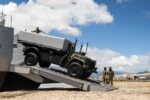On October 22, 2025, SpaceX launched Spain’s second next-generation Earth observation satellite—NG-2—aboard a veteran Falcon 9 rocket from Vandenberg Space Force Base. The mission marks a critical milestone in Spain’s national defense space strategy and strengthens its sovereign intelligence and surveillance capabilities.
NG-2: A Strategic Asset in Spain’s Military ISR Architecture
The NG-2 (Next Generation 2) satellite is part of the Spanish Ministry of Defence’s (MoD) broader program to enhance independent space-based Intelligence, Surveillance and Reconnaissance (ISR). Developed by Airbus Defence and Space under the PNOTS (Programa Nacional de Observación de la Tierra por Satélite), NG-2 complements its predecessor—Ingenio/NG-1—and is designed to provide high-resolution optical imagery for both military and civil applications.
While specific resolution figures remain classified due to operational security concerns, open-source assessments suggest that the NG series offers sub-meter resolution imaging capabilities. The satellite is expected to support tactical battlefield awareness, strategic intelligence gathering, border monitoring, disaster response coordination, and maritime domain awareness.
Built by Airbus: Payload Capabilities and Platform Details
Airbus Defence and Space served as the prime contractor for NG-2. The spacecraft is based on the AstroBus platform—a modular bus used across several European Earth observation missions. While exact payload specifications are not publicly disclosed due to its dual-use nature, it likely includes:
- High-resolution optical payloads with multispectral imaging sensors
- Secure X-band downlink for encrypted data transmission
- Onboard data processing capabilities to reduce latency
The satellite operates in Low Earth Orbit (LEO), likely at an altitude between 500–700 km with a sun-synchronous orbit (SSO) configuration. This allows consistent lighting conditions for imaging operations over any point on Earth at roughly the same local solar time daily—a key requirement for ISR missions.
Veteran Falcon 9 Rocket Marks Reusability Milestone
The launch was conducted using a previously flown Falcon 9 first-stage booster—its twelfth flight—underscoring SpaceX’s continued dominance in reusable launch services. The booster performed nominally during ascent and returned safely to Landing Zone 4 at Vandenberg SFB.
This mission highlights the growing reliance of European defense programs on commercial launch providers amid tightening budgets and increased urgency for sovereign space access. For Spain specifically—as a Tier II NATO member seeking greater autonomy in strategic intelligence—the collaboration with U.S.-based launch assets illustrates pragmatic transatlantic cooperation despite broader EU efforts toward launch independence via ArianeGroup or Vega-C platforms.
PNTOS Program Context: From Helios to National Sovereignty
The PNOTS program was initiated after Spain’s participation in the French-led Helios reconnaissance constellation ended without renewal. Seeking greater autonomy over tasking priorities and data access latency—both critical factors during crisis response—the Spanish MoD opted for a national capability tailored to its operational needs.
The first satellite under PNOTS was Ingenio (NG-1), launched aboard a Vega rocket in November 2020 but lost due to launcher failure. That setback delayed Spain’s sovereign electro-optical capability until now with NG-2’s successful deployment. A third component—a radar imaging system dubbed SEOSAR/PAZ—is already operational since its launch aboard a Falcon 9 in February 2018.
Together with SEOSAR/PAZ (SAR-based) and now NG-2 (optical), Spain achieves all-weather day/night reconnaissance coverage across multiple spectral bands—a key enabler of fused ISR analysis across domains.
Diversifying Europe’s Defense Space Footprint
Spain joins France (CSO series), Germany (SARah/TerraSAR-X), Italy (COSMO-SkyMed), and others in fielding national-level ISR satellites independent of U.S.-provided systems like NRO assets or commercial providers such as Maxar or Planet Labs. This diversification reflects growing European emphasis on strategic autonomy amid rising geopolitical tensions—from Ukraine to North Africa—and increasing hybrid threats requiring persistent situational awareness.
The Spanish Armed Forces are expected to integrate NG-2 imagery into their C4ISR architecture via secure ground stations operated by INTA (Instituto Nacional de Técnica Aeroespacial). Data fusion with other national sensors—including UAVs like SIRTAP or MALE-class platforms—is anticipated as part of ongoing modernization efforts under the Fuerza 35 transformation roadmap.
Implications for NATO Interoperability
While nationally owned, Spain has pledged that imagery from PNOTS assets will be shared selectively within NATO frameworks when aligned with alliance priorities. This supports collective situational awareness while preserving national tasking sovereignty—a balance increasingly sought by mid-tier NATO members investing in indigenous space capabilities.
Future Outlook: Toward Multispectral Fusion & AI Processing
The next phase of development may involve onboard AI-enabled processing for real-time object detection or change analysis directly from orbit—reducing latency between collection and actionable insight delivery. Additionally, integration with RF geolocation or SIGINT payloads could be considered as future upgrades or follow-on satellites evolve beyond pure electro-optical sensing.










